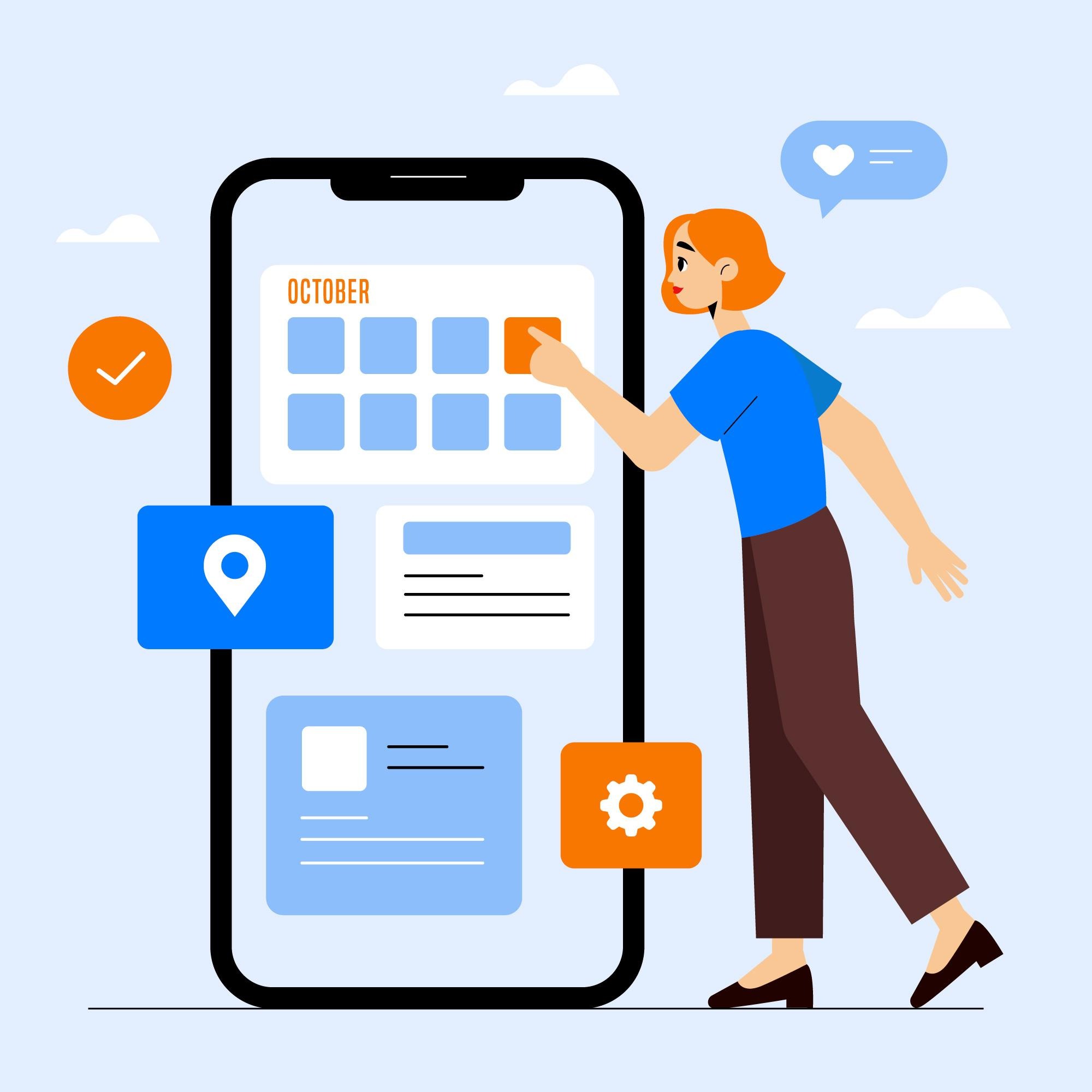Mobile app development has gained quite some pace in recent years, especially considering that there are over 5.2 billion unique mobile devices active globally as we speak, and over 54 percent of all global web traffic comes from mobile devices.
As the mobile app space has become competitive over the years, developers are seeking techniques to improve the user experience of their mobile applications. One such technique that has somewhat become an industry-wide practice is mobile app prototyping.
In this article, we will take you through all the important aspects of mobile app prototyping including topics such as what is app prototyping, the benefits of mobile app prototyping, and paper prototypes for mobile applications.
What is a Mobile App Prototype?
Mobile app prototyping refers to a demo version that focuses mainly on showcasing the application’s design along with demonstrating some of the key features and functionalities of the app.
The app prototype is shared with selected end-users to gather their views & opinions on the app’s visual appeal and design to make any necessary changes.
Prototyping is a crucial step in mobile app development as it helps to create an interface that offers the end-users a better experience than the competitors.
10 Benefits of Mobile App Prototype
Prototyping sounds like a simple step in app development, however, it has a lot of significance in ensuring that your mobile application stands out from the rest of the competition.
Below are 10 benefits of mobile app prototyping that make it an essential stage in developing a mobile application.
1. Easy Development Process:
Changing the code and fixing issues at later stages of app development is time-consuming and takes a lot of effort.
By prototyping the application at each major development stage, both the developers and client(s) can be assured that the progress is in the right direction.
Moreover, any required changes or fixes can be made before progressing to the subsequent stages.
2. Lesser Time and Resources Required:
Following the above point, prototyping ensures that the project completion goes as planned.
Thus, the extra time, manpower, and other resources that otherwise would be spent in fixing/tweaking the application can be saved.
Even though prototyping does mean that some extra time and resources will have to be spent on changing and fixing things, it won’t be as significant as doing them at later stages.
3. Better Clarity:
The inception of any mobile application is from ideas that involve details about how the app will look and function at the end.
Mobile app prototyping ensures that the clients and development team have a frame of reference rather than looking at design drawings or scripted ideas.
4. Better Collaboration:
Prototypes and client feedback can be shared with all the involved team members, thus making sure that the entire team always stays updated about the latest happenings in the project.
Moreover, as the development team is clear on what the client wants, tasks can be assigned efficiently.
5. Higher Predictability:
Prototyping the application vision in the initial stages gives a clear picture to all involved parties about what the end product will be.
Thus, the development team can provide accurate deadlines and other estimates. Moreover, as the team involved gets a clear picture of what needs to be done to achieve their goals, the development tasks can also be completed quickly.
6. Enables Early User Testing:
Even the best mobile applications out there often come with some bugs that get overlooked during the development and testing stages but come into the picture only when the end-user begins to use the application.
By releasing a prototype mobile APK at each major development stage, end-users will be able to test the application thus giving developers an idea of any bugs/issues in the current build.
7. Help in Detecting Design Issues at Initial Levels:
Just like testing functionalities, prototyping also ensures that your app design is functional and user-friendly.
For example, assume that in your current application design error messages aren’t visible clearly to the users or the popups are blocking the background information from being displayed.
If you’re able to detect such issues in the initial stages, you can resolve the problem in the app pages designed until that point.
Without prototyping, you’d have to redesign and implement all the application pages once such an issue is discovered.
8. UX Validation:
Apart from finding bugs/issues in design & features, prototyping also allows the development team to gather data about the overall user experience offered by their mobile application.
The end goal of any mobile application is to provide a friendly user experience and a functional set of features that keep the end users attached to the application instead of searching for alternatives.
By prototyping the app model, developers can easily get feedback on what the users love and hate about the current version of the application.
9. Client and Stakeholder Involvement:
Mobile app prototyping also increases the client and stakeholder involvement in the application development.
This way, all the stakeholders and clients are well aware of where the app development stands at any given point, how long it will take to complete the project, and what the result will look like.
Any changes or requirements can be included in the project before they affect the development process significantly.
10. Re-enforces the Feedback Cycle:
Regularly collecting feedback from all the stakeholders involved in the mobile app project ensures that the development is going in a positive direction.
Prototyping ensures that all the stakeholders are always on the same page, and any of their concerns/demands are always considered.
Thus, any foreseen delays and surprises can be avoided at all stages.
Different Types of Mobile App Prototypes
Now let us take a look at the two different types of mobile app prototyping approaches used by developers.
Low Fidelity Prototypes
Low Fidelity Prototypes are basic representations of what the mobile application looks like.
As such prototyping models are prepared during the initial stages of app development, they are mostly to showcase the design and may not be functional at all.
Paper sketches, digital sketches, storyboarding, etc. are the common techniques used for low-fidelity prototyping.
Advantages of Low-Fidelity Prototyping:
- Requires less effort to create.
- Can be easily scrapped/edited.
- Designers can choose to incorporate live changes during the demonstration.
High Fidelity Prototypes
High Fidelity Prototypes are expected to mimic the experience and functionalities of the end product.
So, all the design elements and functionalities need to be properly implemented.
High Fidelity Prototypes are usually shown on emulator software or as prototype mobile APK/installation files that can be directly used on the end-user devices.
Advantages of High-Fidelity Prototyping:
- Ability to demonstrate all the functionalities of the app.
- End users can engage with the application and provide their feedback.
- As such prototypes mimic the end app version, any changes or requirements can be easily communicated.
Is Mobile App Prototyping Expensive?
Businesses are always interested in cutting costs and improving profits.
There is a common misconception out there that practices such as app prototyping incur additional costs and effort for the development team.
However, such initial costs are negligible compared to the headache that would otherwise arise if any changes or additions, especially on the design front, are requested at the later development stages.
Moreover, as prototyping involves the clients/end-users in the development journey, they will only have realistic expectations about when their application can go live.
Finally, prototyping also ensures that your team can stick to the commitment made to the client, thus boosting confidence in your team.

With roll up sleeves, dive in and get the job done approach, it was in the year 2010 when Sahil started Parangat Technologies. Emphasizing a healthy work culture and technology-driven company, he has successfully created a workplace where people love to work and live. He is a software engineer and a passionate blockchain enthusiast.


 +44-7511-112566
+44-7511-112566 +353-1-8079571
+353-1-8079571 +1-415-799-9792
+1-415-799-9792

